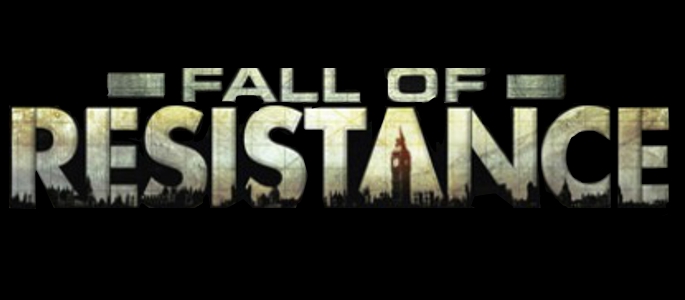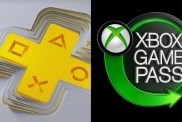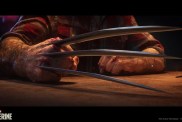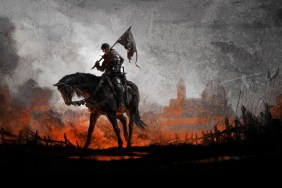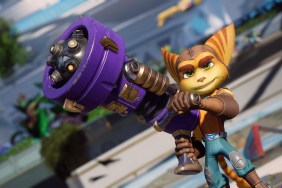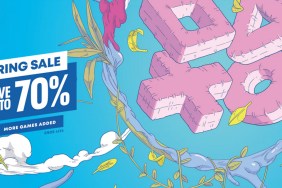The first Resistance released alongside the PS3 with a bang, becoming the platform’s first game to pass a million sales, and gaining an instant fanbase. Five years on, and developer Insomniac Games have announced that they won’t be making any more games in the franchise. What went wrong?
The first we saw of Resistance was at E3 2005, where the game was debuted as “I-8” (Insomniac’s eighth title) as a WWII-inspired alternate history FPS where aliens have overrun Europe. At GDC 2006, it was renamed Resistance: Fall of Man, with Insomniac CEO Ted Price speaking about the advantages of the PlayStation 3 and Blu-ray. When it released on November 11th 2006, the game benefited from the otherwise rather lackluster slew of launch titles, with only a couple of notable titles ushering in Sony’s most powerful console yet. A subsequent drought in high profile releases caused by several delays also helped push the well-reviewed Resistance to success, helping the game become the first PS3 game to sell a million, and eventually selling an estimated 4 million copies.
Two years and several map packs later, and Fall of Man still had a healthy online userbase, but fans wanted more, and Insomniac promised to deliver. On January 11th 2008, Sony revealed the ambitious Resistance 2, announcing that it would include incredibly large 60 player matches and an entirely separate eight player co-op campaign. But when the game releases in November a lot of fans were put off by how different the game was from the original game. While it was still a great game, many thought the online was just too different, the campaign didn’t quite match up and some felt the weapon balancing was off. Despite that, the strong brand name helped the game sell over 3 million copies.
Before the release of the next Insomniac Resistance, Sony Bend tried their hand at a PSP one. 2009’s Retribution was third person and suffered like all PSP games from the lack of a second analog stick. However, it was still seen as one of the handheld’s better titles and is thought to have sold between 800,000 to 900,000 copies – something that is actually quite successful for a PSP game.
After the feedback they received from 2, Insomniac took note of what people thought of the game, spending a whole extra year on Resistance 3, presumably meaning that the game had increased development costs. Again, the game was well received by critics, and this time by most of the fans that played it. Yet Resistance 3 only sold 180,000 copies in the US the month it launched, becoming the 7th best selling game – a significant drop-off compared to Resistance 2‘s 385,000 first month total. It’s now thought to have sold less than a million units.
But why was the game fail to match the success of it’s console predecessors? Resistance 3 was the first to include the controversial PSN Pass that charges $10 for used game purchasers to go online, and has been cited as some for the reason for the drop in success. But that’s a rather unlikely reason for such a huge drop in sales – the average consumer doesn’t know what the pass is, and the average gamer doesn’t care enough to boycott the game. Another reason was fan feedback to Resistance 2 – a lot of people were put off by the game and didn’t want to return to the franchise. But several games have returned from a weak predecessor with the right marketing, so let’s take a look at the game’s US marketing:
Unfortunately, as much as we love Kevin Butler, the focus of that advert isn’t Resistance 3, it’s the Move sharpshooter – which meant that Sony was trying to convince consumers to spend much more to get the full package, limiting the number of potential customers.
Timing was also a problem for the game, with R3 having released last September, alongside the more successful Dead Island and only one month before the much more heavily marketed and hyped shooter Battlefield 3. BF3 went on to be EA’s fastest selling game ever, and sold 8 million by the end of November. Christmas’ other FPS, Call of Duty: Modern Warfare 3, became the fastest selling entertainment product to reach a billion dollars worth of sales. In short, the game went up against the fiercest FPS competition in history.
Call of Duty has also had a profound effect on the market, with millions of FPS fans becoming used to picking the annual series up every year to fill their FPS craving. Any other contenders had to spend huge amounts to convince gamers to also buy their game.
Ratchet & Clank: All 4 One also released only one month later, meaning that fans of the developer who only bought a few games were forced to choose.
We asked Insomniac about their thoughts on the subject, but were told the company was not doing any interviews about the matter. Ted Price released a video discussing the fact that they have left the franchise, saying that they felt Resistance had “reached its logical conclusion in terms of the story [they] want to tell”. A fair response, but the fact the the third game had a new protagonist could suggest the developer – which has made eight Ratchet & Clank games – had plans to continue with Joseph Capelli. When we asked Insomniac about their future, James Stevenson, Marketing Lead for Insomniac Games replied:
We aren’t in a position to comment much more than what Ted did today, and to say we’re excited to be working on Overstrike and our Facebook game.
Luckily for Resistance fans, Nihilistic will be releasing Burning Skies for the Vita later this year. But with the franchise’s support clearly waning, its best days are behind it, and it’s unknown if we will see another game after the Vita release.
Were you a fan of the Resistance series? Share your best moments in the comments below.
